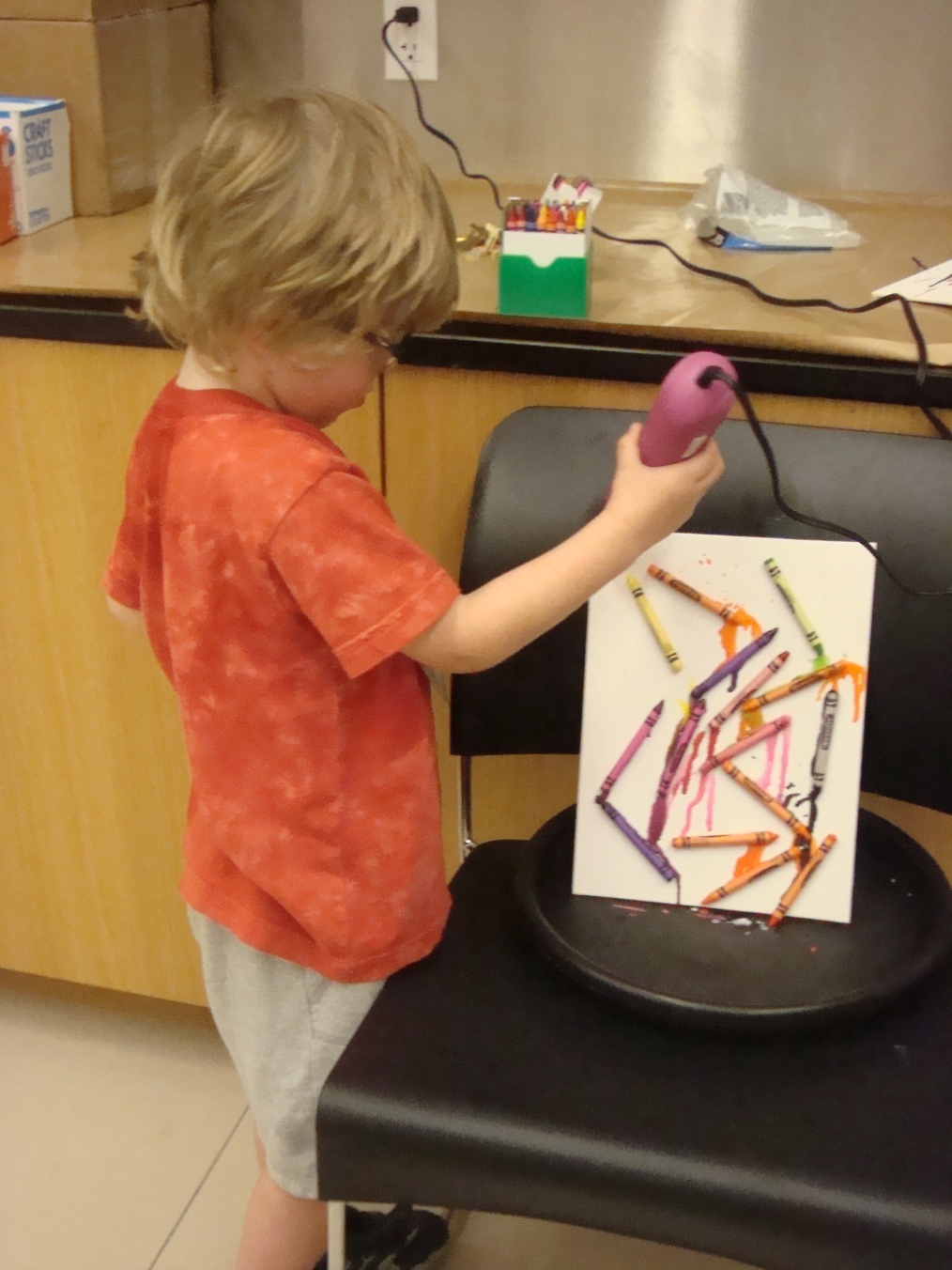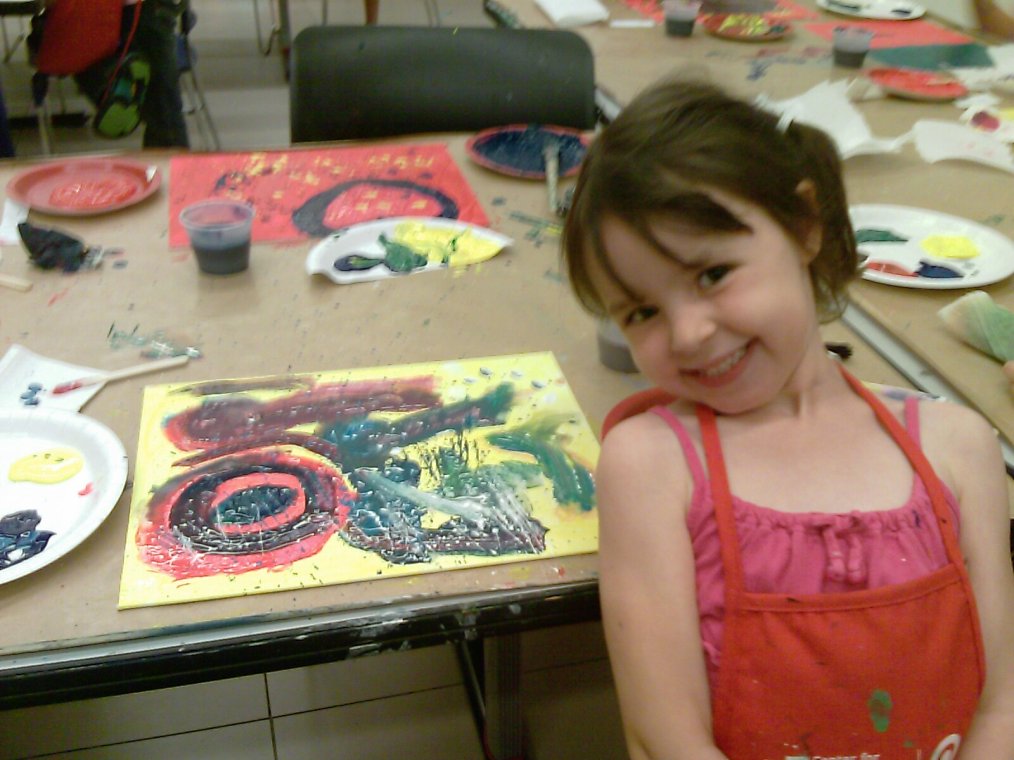
Each year, the Family Experiences staff has the privilege of working with a wonderful and extremely talented group of summer camp interns. These dynamic individuals truly make up the heart and soul of our camps and are responsible not only for the day-to-day operation of the program but for also helping to make the connection between our campers and works of art something that is both enjoyable and transformative. We could not run our camps without them! This is the fourth in a four-part series written by our summer camp interns and reflecting on their experiences at the Museum.–JC
What the Kids Taught Me
Throughout the summer, we have been teaching young artist from ages 4-12 about art. Portraiture, landscape, abstract art, print making, and color, were just a few of the topics that we explored. While the teachers and interns were busy teaching the children the basics of art, the kids in fact were teaching us about creativity and life. Here are a few things that I have learned from the students:
1) It’s okay to color outside the lines sometimes.
One of the first rules that children learn when they do art is to color inside the lines. While this may work to be more appeasing for the adult’s trained eye, it also stifles the child’s ability to think in their own unique way. The training to follow the instructions the lines with the rest of the class, changes the child’s creativity from free flowing to uniform. This standardization is then realized in adulthood when adults are then told that they need to “think outside the box” or in more artistic terms, color outside the lines. We should skip the middle phase and allow the creativity to flow no matter what stage of life we may be in. I have seen that the kids have it right from the start – be fearless in creativity and do not always conform to the lines determined for you.
2) Don’t let ability limit creativity
As most can see, four- year olds do not have the greatest finesse with their art. However, it has never stopped them from creating! After a certain age, people are discouraged from doing things that they are not particularly skilled in which tends to put a lid on some children’s inventiveness and curiosity. What I have seen from the young children is that even when they can’t draw a perfect shape or choose the most realistic colors for their self – portrait, there is still a beauty in the individuality that cannot be replicated. I have learned to appreciate that unique beauty in their art as well as mine and, even further, in life.

3) Look at things from a new angle
One project that a 9-12 year old class did was to create still life paintings from the objects that were set on their table. When the project was announced, the students immediately got to work knowing automatically how they would create their masterpiece – except for one student. This one student, Antonio, looked at his still life alligator piece from several angles then asked the teacher, “Can I do my still life from a bird’s eye view?” This was a strange and exciting because I had never thought of doing a still life painting from another angle other than straight on. But when I saw his painting, I found it to be brilliant, unique, and added a new perspective to the alligator piece that I had never really considered. Since then I have begun to look at pieces from different views, noticing the small wonders from weird angles that would normally be ignored. Antonio taught me to never see things strictly as they are and to use different ideas and points of view to make art and life more fascinating.

4) Abstract art is from the heart
The very first week of camp, I worked with a group of 4 and 5 year olds. While discussing what the class would say for their exhibition on Friday, one child raised their hand and said “Abstract art is from the heart.” This phrase has been my source of inspiration, motivation, and understanding this summer. Art is a blank slate for any concept, feeling, sensation, memory to become realized. With the stresses of everyday life, I forget that I always have art to turn to for relief and rejuvenation. Another reason why I love this phrase so much is because when I don’t understand a piece of contemporary art, I think about this phrase and imagine the emotions that the artist went through while creating the work and I gain a better appreciation for the piece and the artist. This awesome saying has truly transformed the way that I interact with art by giving me more revere and love for free flowing creativity.
In conclusion, these wonderful young artists have taught me that creativity should never stop in the classroom. Art and imagination go hand in hand and are in every aspect of life. I should never stop creating, never stop wondering, and never stop coloring.

Posted by: Lily Ngaruiya
 Some built their houses in the children’s area of the Park (including one fairy house built inside of a concrete tunnel!), others found a place for their house at the base of a tree trunk or in a bush, while a few families spead out on the lawn to build their constructions out in the open. When families were finished with their creation, they packed up their nature supplies so that they could reinstall their fairy house (or snake house, dog house, or bunny house) at home!
Some built their houses in the children’s area of the Park (including one fairy house built inside of a concrete tunnel!), others found a place for their house at the base of a tree trunk or in a bush, while a few families spead out on the lawn to build their constructions out in the open. When families were finished with their creation, they packed up their nature supplies so that they could reinstall their fairy house (or snake house, dog house, or bunny house) at home!






![aperture_scale[1]](https://dmafamilyblog.files.wordpress.com/2012/11/aperture_scale1.jpg?w=300&h=195)
![camera-manual-mode-shutter-speed[1]](https://dmafamilyblog.files.wordpress.com/2012/11/camera-manual-mode-shutter-speed1.jpg?w=324&h=124)
![camera-manual-mode-shutterspeed-motion-blur[1]](https://dmafamilyblog.files.wordpress.com/2012/11/camera-manual-mode-shutterspeed-motion-blur1.jpg?w=270&h=154)




























